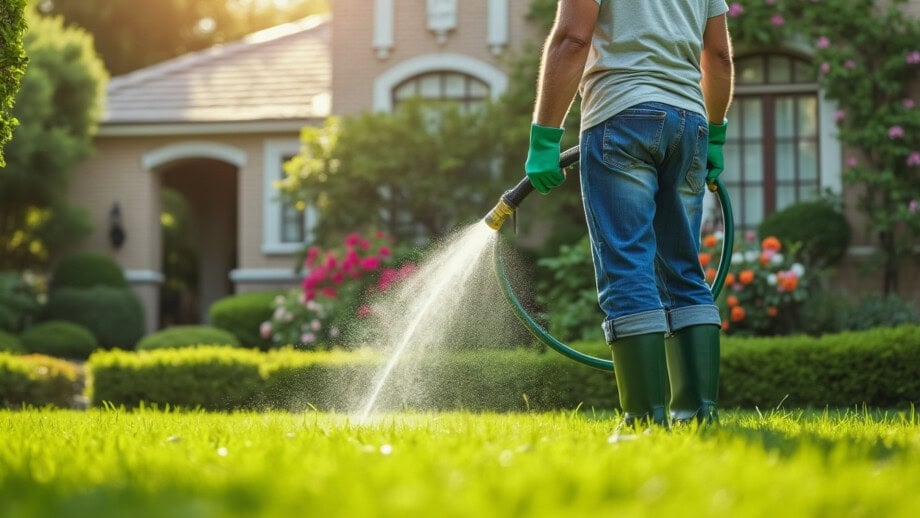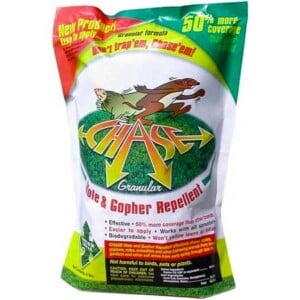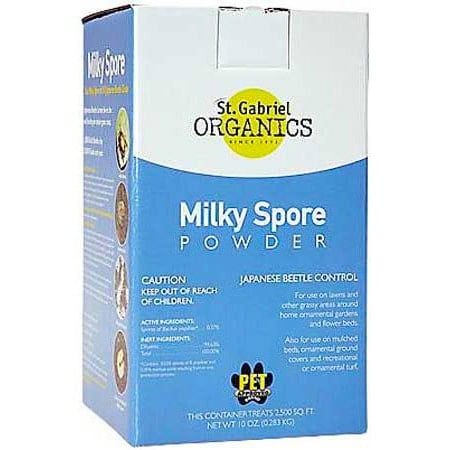Pesticides and Health
Traditional turf products that use chemical pesticides not only put the health of your family and pets at risk but endanger the world at large. That’s something we all want to avoid.


Weed Prevention
for Lawns
Organic Weed & Feed
Use to prevent crabgrass, dandelions and more! Pelleted for easy application.
$14.95Learn moreA word about words: many of us think of pesticides as being equivalent to insecticides, but the term is actually much broader. “Pesticides” includes products developed to kill anything perceived as a pest — insects, weeds, fungi and other disease-causing organisms, even rodents.
Health Effects on Humans and Pets
It’s extraordinary how many health issues are associated with pesticides. Cancers, neurological problems, and birth defects are some of the most dramatic, but increased asthma attacks and skin disorders take a huge toll on the people affected. Pesticides are also increasingly suspected of being endocrine disrupters, a nasty category of chemicals that can cause a wide array of disorders from cancer to miscarriage to immune system problems.
Cats and dogs are even more vulnerable to most of these disorders than humans, because they have more skin area in proportion to their body size, so they have a proportionally larger surface through which they can absorb poisons. Besides that, they lick their fur and their feet — they never wear shoes.
Got bugs? At Planet Natural we offer a large selection of natural and organic pest control solutions that are guaranteed SAFE and effective. Also, visit our Pest Problem Solver for pest pictures, descriptions and a complete list of earth-friendly remedies.
But the most vulnerable group of all is children. They have much thinner and more permeable skins than do animals, but like animals, they have a larger skin area in relation to the weight or volume of their bodies than do adults. Children’s immune systems are not fully developed, so they cannot protect themselves from toxins as well as can an adult’s system. Furthermore, as they play they roll around on grass, crawl on it, walk barefoot on it, and sometimes eat it. As a result they absorb more of whatever is on the grass, and they absorb it through more routes than do adults. They also eat and drink more than adults do in proportion to their weight, so they take in a higher proportion of pesticides found on or in food and water.
Again and again while reading about pesticides one will see reference to a rise in non-Hodgkin’s lymphoma (NLH), a class of lymphatic cancers. What used to be a rare disease is now the fifth most common cancer in the U.S. In the twenty-four years between 1973 and 1997, the incidence of these cancers rose by about eighty percent (80%), or almost 3% yearly. In Canada, the rate is rising at the slower but still significant rate of 1-1.5% yearly.
Researchers and doctors are still working to understand this rise, but it’s becoming increasingly clear that environmental factors, particularly pesticides, are often involved. One report by the esteemed National Cancer Institute of Bethesda, Maryland, listed eight “possible causes” of non-Hodgkins lymphoma, four of them dealing with what lay folks would think of as medical issues (such as genetics, viruses, and pre-existing medical conditions) and four with environmental factors. The first item on that second list was pesticides. In study after study, the first environmental risk factor or probable cause mentioned is pesticides.

KID & PET SAFE!
Mosquito Granules
Works for up to 3 weeks and may be applied where children and pets play.
$15.95Learn moreWorks for up to 3 weeks! Bonide® Mosquito Beater contains cedar oil, citronella oil, geranium oil, lemongrass oil and garlic to provide effective, long lasting relief. May be used in areas where children and pets play.
That pesticides are dangerous is well-established (they were designed, after all, as nerve agents and are closely related chemically to the poisons used in the Nazi gas chambers), but the working assumption has been that there is a “safe dosage” below which they don’t harm us. According to this model, if a single low dose of a chemical appears to be safe, then ten or ten hundred similarly low doses would also be safe. The principle is sound; you can eat a slice of rhubarb pie quite safely, every day of your life, though in high dosages the oxalic acid in it would kill you. (Fortunately, it’s mostly concentrated in the leaves.)
But there are other substances and procedures for which this rule does not hold. Most of us know, for instance, that an X-ray isn’t dangerous but that you should limit the number you have in a day, a year, and a life-time. A less familiar example is provided by the heavy metal selenium. Minute amounts of this mineral are actually necessary to good health, and a single dose just above that amount won’t hurt you. But according to the EPA’s Consumer Factsheet on Selenium (PDF), long-term exposure at relatively low levels can cause “hair and fingernail loss; damage to kidney and liver tissue, and [to] the nervous and circulatory systems.”
Until recently, pesticide testing focused on single, high dose (acute) exposure, rather than on long-term, low-level (chronic) exposure, which is of course harder to measure. However, some more recent studies amongst agricultural workers and workers in pesticide factories — people exposed to many low doses — do show increased rates of cancer and other problems. For example, a City of Toronto review of the effects of pesticides on humans cited a study that found that children who had lived on a farm or near an animal breeding facility before age 13 and then went on to become farmers or animal breeders themselves had higher-than-normal chances of contracting various lymphatic cancers, including non-Hodgkin’s lymphoma (see Lawn and Garden Pesticides: A Review of Human Exposure & Health Effects Research – PDF).
Not only can pesticides be dangerous in their original form, but they can break down into other, sometimes more dangerous, chemicals. Many can evaporate or volatilize, often forming volatile organic compounds (VOCs), which according to the EPA can cause eye, nose, and throat irritation; headaches, loss of coordination, nausea; damage to liver, kidney, and central nervous system. Some VOCs can cause cancer in animals; some are suspected or known to cause cancer in humans.
Once volatilized, garden chemicals can react with each other to form new, sometimes unexpected compounds. A recent study of golf-course pesticides points out that it “did not consider the volatilization of degradation products, which may have chemical properties, including toxicities much different than the parent compounds.”
Further down the chain of chemical reactions, VOCs also play a role in the formation of ground-level ozone, a major factor in air pollution and a significant health hazard. Where the ozone layer in the upper atmosphere protects the earth from harmful UV rays, ground-level ozone exacerbates asthma, bronchitis, and emphysema, irritates the throat and lungs, and causes coughing, congestion, and in some cases, permanent lung damage.

IT'S ORGANIC!
Grub Killer
Easy to use, just connect to your garden hose and treat problem areas.
$29.95Learn moreDon’t let pests spoil your yard and gardens! Safer® Grub Killer is effective on the immature larval stages of common lawn pests including, June bugs, billbugs, Japanese beetle, mole crickets, chinch bugs and sod webworms. OMRI-Listed for use in organic production.
Humans and other animals can take in unwanted chemicals through their mouths, their noses, or their skin. We can eat them, breathe them, or touch them. Many scientific studies, needing to control conditions and verify results, can look at only one route at a time. The study mentioned above reported that golfers faced “minimal” risks from inhaling 15 tested chemicals, but warned that “it must be emphasized that inhalation is only one intake route, and a more complete risk analysis of these pesticides would include exposure from dermal contact and ingestion.”
Tests also focus on isolated, pure, single chemicals, not on the ways that those chemicals may interact when combined in a single shelf product or when volatilized. There are good reasons for this seeming neglect: scientists need to isolate the actions and effects of particular chemicals so that they can ascribe findings to something specific. But the result is that many actual shelf products, the things you buy at the store, have never been tested, except perhaps by the manufacturer.
The “inert” ingredients in most products are not listed on the label, though they can also be toxic or can become toxic in combination with the other chemicals in the product, especially as these chemicals break down. ‘Inert’ in this context does not mean chemically inert. Rather, it refers to what are called “carrier agents” — chemicals which keep a solution emulsified, or which ensure that it sticks to the surface it’s sprayed on. As explained by the EPA, “these carrier agents are called ‘inerts’ in pesticides because they are not toxic to the targeted pest; nevertheless, some inerts are capable of causing health problems.” ‘Inert,’ in other words, means “not toxic to the targeted pest.” This does not mean that it is not toxic to you.
Not everything said above is true of every pesticide, of course. But far too much of what is summarized here holds for far too many pesticides. All too often, pesticides
- are toxic in themselves;
- are often combined with other compounds whose interactions may be unknown;
- are combined with “inert” ingredients which may be more dangerous than acknowledged;
- can break down into other toxins;
- can volatilize to form VOCs, which
– are toxic
– can re-combine into new, toxic chemicals
– contribute to ground-level ozone, which
– is a major health hazard.
Working with a definition of pesticides does not include herbicides, but covers products designed to kill insects, fungi, bacteria, and rodents, the EPA states categorically that “Pesticides are inherently toxic.”

How Chemicals Spread in the Environment
Pesticides can reach unintended targets in any of several ways: they can be spilled (or poured) into or near waterways, they can leach or percolate into water, they can be passed on from one organism to another that ingests it, they can drift with the wind when they are first sprayed, or evaporate afterwards and then drift. They can even be carried into the home on shoes.
Tracked in pesticides affect people in urban environments where agricultural pesticides are rare but lawn-care pesticides common. It doesn’t seem that significant amounts could be transported by such a method, but as long ago as 1997, the EPA reported otherwise. The study, which followed several chemicals including 2,4-D, concluded that “track-in on shoes is a reasonable mechanism by which lawn-applied pesticides are carried into the home.”
This study found that pesticides were still being tracked in five and even six days after the pesticide was applied (see Simulation of Track-in of Lawn-Applied Pesticides from Turf to Home – PDF). Most herbicides and insecticides for lawns warn people to stay off the grass for only 24 hours after use. (Rain helped lower track-in rates, and so did mats for wiping feet.)
In agricultural areas, water contamination is a primary concern. One extended study performed by the U.S. Geological Survey (1992-1999) of almost fifteen hundred (1500) wells in the United States found this:
Seventy percent of the samples contained at least one VOC, pesticide, or anthropogenic [man-made] nitrate; 47% contained at least two compounds; and 33% contained at least three compounds. Water from about 12% of the wells contained one or more compounds that exceeded U.S. Environmental Protection Agency drinking-water standards or human health criteria.

CONCENTRATED FORMULA
Scythe Herbicide (2.5 Gallon)
A non-selective, post-emergence formula for ALL unwanted vegetation.
Learn moreVisible effects within hours! Scythe Herbicide is a non-selective weed control for grasses and broadleaf weeds. It is formulated to provide fast acting results on a long list of weeds and grasses, as well as most mosses and lichens.
One of the most dangerous problems with pesticides is that most do not break down quickly in the environment. Instead they stay chemically intact, moving from site to site, doing damage as they go. When they stop moving, it is often not because they have degraded into a less potent or toxic form, but because they are accumulating in your liver.
This passage of toxic chemicals up the food chain was made most infamous in the case of DDT, chronicled by Rachel Carson in her ground-breaking book Silent Spring, published in 1962. A vastly oversimplified version of the process she described looks like this: DDT kills bugs, birds eat bugs, birds’ eggshells become too thin to support a nesting bird’s weight, and suddenly birds are endangered. Also, DDT or affected insects drift into water, fish eat insects, people eat fish, and voila, people who never walk a field are exposed to pesticides and their cancerous effects.
Contemporary pesticides usually break down far more quickly than those produced forty or fifty years ago, but they can be extremely toxic before that breakdown begins (see Environmental Effects of 30 Commonly Used Lawn Pesticides – PDF). Furthermore, movement up the food chain is only one way that pesticides spread and thus harm people. Wind drift can (and does) carry sprayed chemicals from one site to another, while run-off and percolation can carry them into streams and rivers.
The quicker degradation of new pesticides would seem to be all good — it prevents the toxins from accumulating in one organism and being passed on, intact, to another organism – but the world is not a fair place. Even when the original chemical is relatively benign, the breakdown of that chemical sometimes produces others that are more dangerous. This is what is involved in “sick building” syndrome, where building materials emit noxious or even toxic gases for months or years after being installed. First identified in sealed office-buildings, this is an increasing problem in new homes full of paints, particle-board, and synthetic rugs or flooring that “off-gas.” For more information on this subject please click on Is Your Office Killing You?
As mentioned above, pesticides too can vaporize or volatilize, thus becoming airborne (and mobile) after safely reaching their intended targets. Temperature generally increases volatility (as it does evaporation,) and wind speed influences how far volatilized chemicals travel. In other words, the weather matters a lot, but does the lawn-care company hired by your neighbor take account of it?
Other relatively benign pesticides may break down under very specific conditions into toxic chemicals. The fungicide mancozeb, for instance, won’t win any prizes as most-dangerous pesticide (it doesn’t appear to cause cancer, long-term neurological damage or endocrine disruption), but it degrades in soil, water, light, and the human body into a number of other substances, amongst them ethylene thiourea (ETU), a chemical known to cause thyroid problems in humans and cancer in animals, and to persist in the environment for far longer than the original chemical (see Environmental Fate of Mancozeb – PDF).
Given all these chemical complexities, the quick breakdown of more recent pesticides, which would seem to be all good, turns out not so simple after all.
Chemical Dependency – How they Damage your Lawn
It’s got to be one of the great ironies of modern life: the stuff we dump on our lawns not only isn’t good for us, it isn’t even good for the grass. How can this be? After all, whatever it is that most lawn companies do, the grass certainly stays green; doesn’t that mean it’s healthy? You’d think, wouldn’t you.

OMRI LISTED!
Lawn Restore
Contains only SAFE and NATURAL ingredients -- NO manures or chemicals!
$39.95Learn moreA slow release organic fertilizer! Ringer® Lawn Restore II (10-0-6) provides the essential nutrients that produce thick, green lawns and deep, vigorous root systems. Pelleted for easy application. Each 25 lb bag covers 5,000 square feet.
Fertilizer
What you’re getting with most commercial fertilizers is a high dose of water-soluble nitrogen, which is roughly analogous to a lunch consisting of a candy bar chased by a milkshake. Yes, the dose greens your grass nicely, but it’s like a sugar high: it doesn’t last. Furthermore, just as the sugary lunch is generally followed by a sugar low, once the quick-fix fertilizer is absorbed and washed away, there’s simply nothing left, and the grass goes into panic-mode.
You’d need to eat eight times a day to feel full if you were subsisting on candy bars, but only three times if you were getting three squares with plenty of protein. Similarly with fertilizers: if the grass is getting conventional water-soluble chemical fertilizers, it will need them often — four times a season is generally recommended — but if it’s getting the more complex, non water-soluble chemical mix offered by organic lawn fertilizers, it will need far fewer doses, (one to two per season) because each will last longer. The organic version, like a high-protein breakfast, has some nitrogen that’s quickly and easily available, but more that takes longer to break down and be absorbed by plants. Since it isn’t easily dissolved in water, it won’t just leach away as can the excess from conventional fertilizers. And since it stays where you put it, it remains available to your grass instead of entering the water table.
Grass fed primarily on water-soluble chemicals tends not to develop a deep, fully-developed root system, because food is so easy to get. It comes to need those chemicals, since it hasn’t developed the organic structure that would enable it to reach nutrients in the soil, especially those that lie more than a couple of inches below the surface. In his book The Chemical-Free Lawn, Warren Schultz calls this phenomenon “lazy grass.” Furthermore, since its pampered roots remain shallow, it requires frequent watering and can’t withstand drought.
All fertilizers save the compost you produce yourself in the backyard or the manure you get from a local farmer has been produced, and some amount of oil is generally involved, in both transportation and production. Even where production requires little machinery, power is needed for packaging as well as for heating and lighting work facilities. Synthetic fertilizers, however, are in general more refined than organic ones, and require more oil for their production. Furthermore, as they breakdown they release the greenhouse gas nitrous oxide into the atmosphere.
As if that weren’t enough, chemical fertilizers can directly degrade your soil, thus damaging plants when used over the long-term. Improper or excessive application of inorganic fertilizers (and this is the norm for lawns) can create pH imbalances and can lead to a buildup of salts and of nitrates which can pollute wells, lakes and streams. The salts also damage microorganisms in the soil, especially the aerobic ones that help with decomposition. This process in turn damages soil structure, leading to increasingly compacted soil. The absence of micro-organisms also results in a thick layer of thatch, and if you do leave clippings to lie, they will probably decompose slowly.
Yet another problem with conventional fertilizers is that because they are so pure, they do not deliver the full range of nutrients necessary to real plant health. The nitrogen content ensures green grass, but the color is a false indicator of health.

#1 MOLE REPELLENT!
Mole & Gopher
Effectively rids burrowing animals from turf, gardens and other planting areas.
$27.95Learn moreGranular formula is easy to apply! Chase® Mole & Gopher Repellent effectively rids burrowing animals from lawns, gardens and other planting areas. Safe to use around birds, pets or plants and will not yellow lawns or foliage.
Pesticides (Insecticides, Herbicides & Fungicides)
The insecticides and herbicides that make up a big part of a conventional lawn’s diet do more than cause dependency; they poison the soil and the organisms in it. Most chemical potions are “wide-spectrum,” meaning that they’ll take down most any insect or broad-leafed weed in their way. This may seem like an advantage (who wants to buy one bottle for dandelions and a different one for clover, or one powder for whiteflies and a different one for aphids?) but it means that you’re also killing off most of the bees, lacewings, and ladybugs above ground, and a million myriad organisms in the soil itself, including most of the earthworms. Since earthworms both aerate and fertilize, their demise is a real loss. It may feel harder to mourn the microorganisms that die, but your soil is certainly the poorer. It’s their job to break down organic matter, making it accessible to the grass, and their minute bodies themselves provide nutrients as they decay. These, too, are lost.
The coup-de-grace, the real stomach wrencher, is that many insects develop immunity to insecticides over years of use, so new, often more lethal compounds must be developed to do the same job.
As a result of these factors, chemically-dependent lawns often cannot withstand assaults from pests or diseases — so they require more fertilizer, more pesticides, to beat back any problems. It’s the quintessential vicious circle.

















